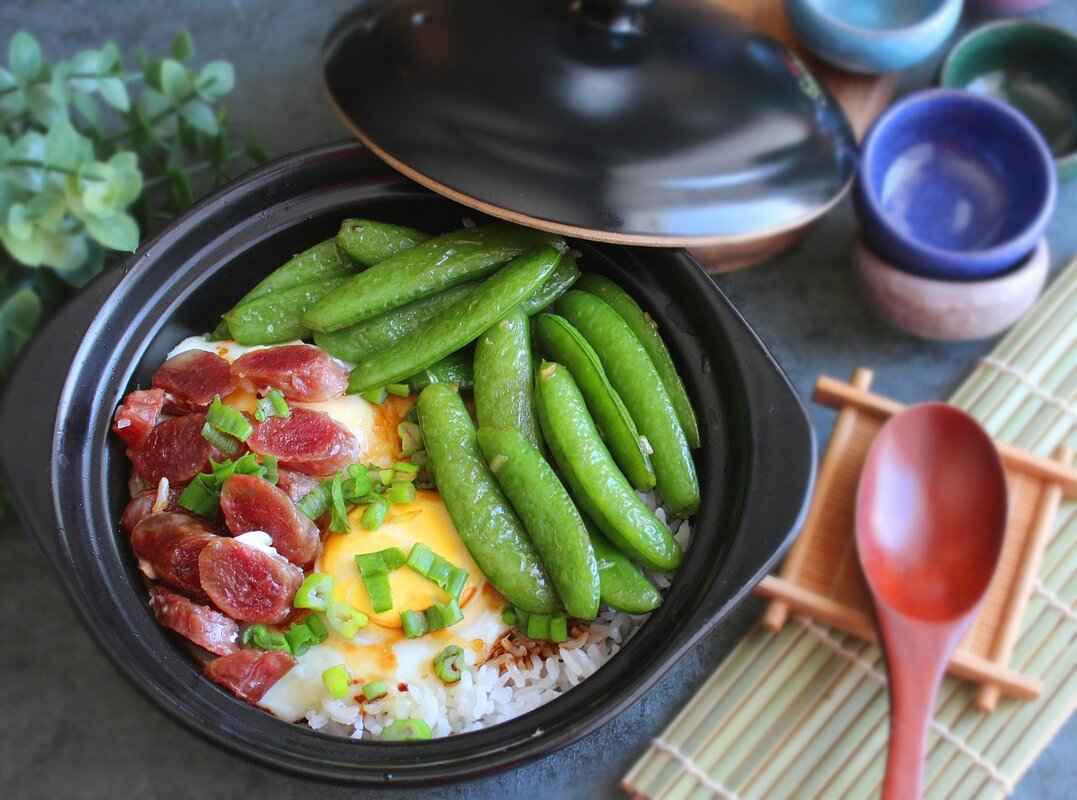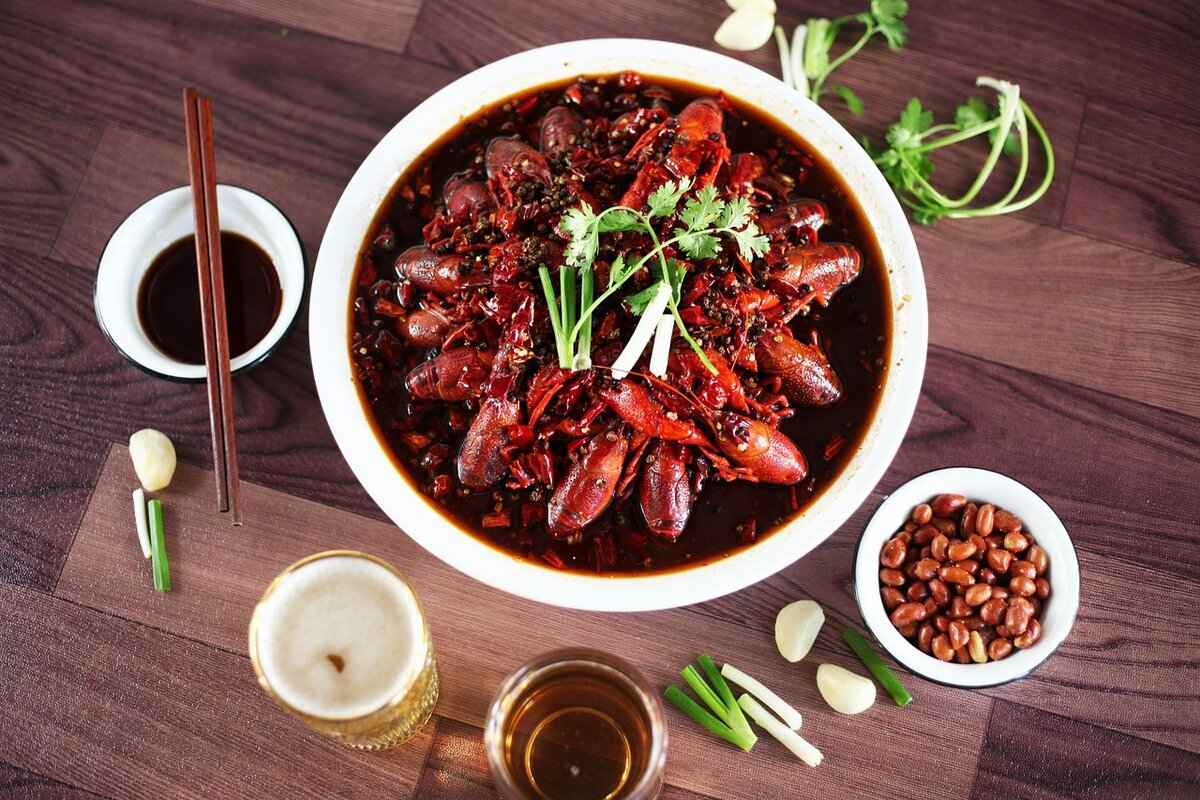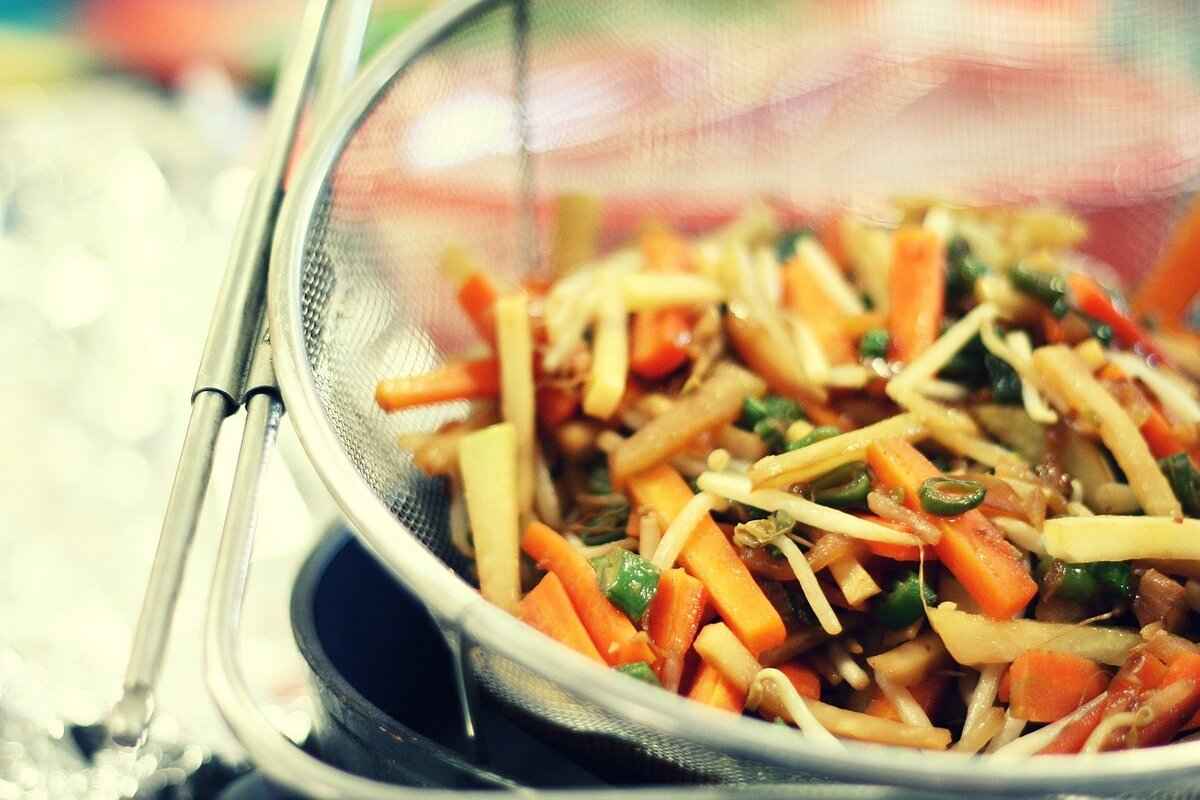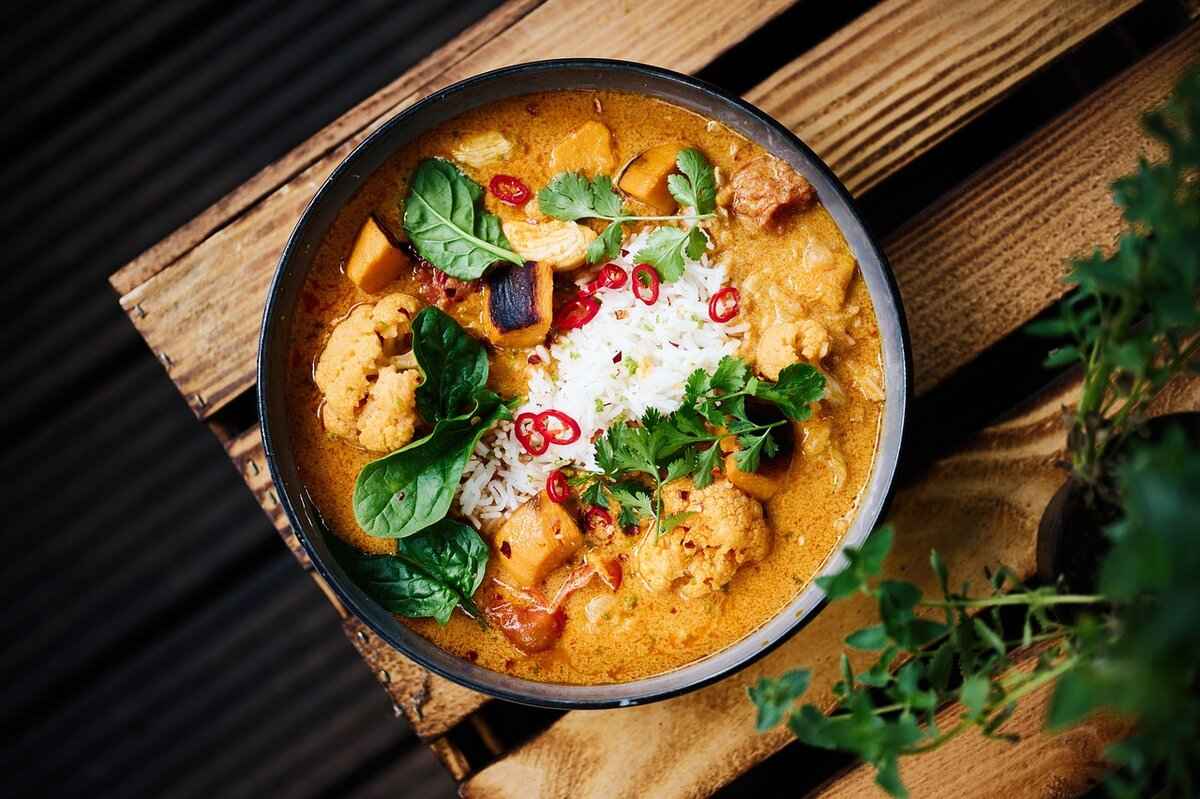This article explores the distinctions between Asian fusion cuisine and traditional Asian culinary practices, highlighting their ingredients, techniques, cultural significance, and popular dishes to provide a comprehensive understanding of both styles.
Asian fusion cuisine is a culinary trend that combines elements from diverse Asian traditions with influences from Western cooking. This innovative approach emerged in the late 20th century, driven by globalization and the desire for culinary creativity. Chefs began experimenting with flavors, techniques, and presentation, resulting in dishes that are both familiar and unexpected. The essence of fusion cooking lies in its ability to transcend cultural boundaries, creating an exciting dining experience.
Traditional Asian cuisine refers to the authentic cooking methods, ingredients, and recipes that have been passed down through generations. Each region in Asia boasts its own culinary identity, shaped by history, geography, and culture. Traditional dishes are often characterized by their focus on balance, harmony, and the use of fresh, local ingredients. The preservation of these culinary practices is vital for maintaining cultural heritage.
Core ingredients define the unique flavors of traditional Asian cuisine. Staples such as rice, soy sauce, and a variety of spices play a crucial role in flavor development. These ingredients not only provide taste but also reflect the agricultural practices and climate of their regions.
Different regions in Asia utilize distinct ingredients, contributing to diverse culinary experiences. For instance:
- China: Known for its use of rice, noodles, and a wide array of vegetables.
- Japan: Emphasizes fresh seafood, rice, and seasonal produce.
- India: Renowned for its spices, lentils, and rich curries.
Traditional Asian cooking techniques, such as stir-frying, steaming, and braising, are essential for enhancing flavors and textures. These methods not only preserve the nutritional value of ingredients but also contribute to the overall dining experience.
Traditional Asian cuisine boasts a variety of iconic dishes that reflect its rich heritage. Popular dishes include:
- Sushi: A Japanese dish that combines vinegared rice with various ingredients.
- Dim Sum: A Cantonese style of serving small, flavorful dishes.
- Curry: A staple in Indian cuisine, known for its complex flavors and spices.
Asian fusion cuisine often reinterprets traditional dishes by incorporating unconventional ingredients and techniques. This creativity allows chefs to blend flavors in exciting new ways, appealing to modern palates. For example, a traditional Japanese sushi roll may be transformed into a sushi burrito, combining elements from Mexican cuisine.
Fusion cuisine has inspired numerous innovative dishes that combine unexpected elements. Examples include:
- Sushi Burritos: A portable version of sushi wrapped in seaweed.
- Thai Curry Pizza: A unique twist that combines Thai flavors with Italian pizza.
Globalization has significantly influenced the rise of Asian fusion cuisine, allowing chefs worldwide to experiment with diverse flavors. Cultural exchange has led to the blending of culinary traditions, resulting in innovative dishes that showcase the best of both worlds.
Asian fusion cuisine offers a range of benefits, including culinary creativity and the ability to cater to diverse dietary preferences. It appeals to a global audience by encouraging exploration of new flavors and combinations.
Fusion cuisine often caters to varied dietary preferences, making it accessible to a broader audience. Chefs create inclusive menu options that respect different cultural backgrounds, ensuring that everyone can enjoy the experience.
Asian fusion encourages diners to explore new flavors and combinations, fostering a spirit of culinary adventure. This exploration not only enhances appreciation for diverse food cultures but also inspires chefs to push the boundaries of traditional cooking.
Despite its popularity, Asian fusion cuisine faces challenges, including authenticity concerns and ingredient sourcing. These issues can impact both chefs and diners as they navigate the complex landscape of culinary innovation.
Balancing innovation with authenticity can be challenging for fusion chefs. It is essential to respect traditional flavors while experimenting with new ideas, ensuring that the essence of the original dish is not lost.
Sourcing quality ingredients for fusion dishes can pose challenges, particularly regarding sustainability. Chefs must consider the environmental impact of their ingredient choices while striving to create delicious and innovative dishes.

What is Asian Fusion Cuisine?
Asian fusion cuisine is an exciting culinary style that creatively merges the diverse flavors and techniques of various Asian culinary traditions with influences from Western cuisines. This innovative approach has gained popularity across the globe, offering a fresh perspective on traditional dishes and introducing new flavors that tantalize the taste buds. But what exactly defines this unique culinary phenomenon?
At its core, Asian fusion cuisine is characterized by its innovative spirit and willingness to experiment. Chefs often draw inspiration from a variety of Asian cultures, including Chinese, Japanese, Thai, and Indian, while incorporating elements from Western culinary practices. This blending of traditions results in dishes that are not only visually appealing but also packed with flavor.
The origins of Asian fusion cuisine can be traced back to the late 20th century, particularly in cosmopolitan cities where diverse cultures intersect. As Asian immigrants brought their culinary traditions to new regions, they began to adapt their recipes to local ingredients and tastes. This adaptability led to the birth of fusion dishes, which continue to evolve as chefs experiment with new combinations.
- Innovative Ingredients: Fusion dishes often feature unexpected ingredients, such as avocado in sushi rolls or taco shells filled with stir-fried vegetables.
- Creative Techniques: Chefs may employ various cooking methods, such as grilling, sautéing, or even baking, to enhance the texture and flavor profiles of their dishes.
- Visual Appeal: Presentation plays a crucial role in fusion cuisine, with chefs artfully arranging ingredients to create stunning plates that entice diners.
Some of the most celebrated dishes in the realm of Asian fusion include:
- Sushi Burritos: A delightful combination of sushi ingredients wrapped in a large seaweed sheet, resembling a burrito.
- Thai Curry Pizza: A fusion of Italian and Thai flavors, featuring a pizza base topped with rich coconut curry sauce and fresh vegetables.
- Kimchi Tacos: A creative blend of Korean kimchi and traditional Mexican tacos, offering a spicy and tangy flavor explosion.
Asian fusion cuisine not only provides culinary creativity but also promotes cultural exchange. By blending different traditions, chefs can create unique dishes that appeal to a wide range of palates. This culinary innovation encourages diners to explore new flavors and appreciate the diversity of food cultures.
Despite its popularity, Asian fusion cuisine faces certain challenges, such as:
- Authenticity Concerns: Some critics argue that fusion dishes may dilute the authenticity of traditional recipes, leading to debates about what constitutes “real” Asian cuisine.
- Ingredient Sourcing: Finding high-quality ingredients that align with both Asian and Western culinary traditions can be challenging, especially when considering sustainability.
In conclusion, Asian fusion cuisine represents a dynamic and evolving culinary landscape that celebrates creativity and cultural exchange. By understanding its origins, characteristics, and the challenges it faces, one can appreciate the artistry behind this innovative cooking style.

What Defines Traditional Asian Cuisine?
Traditional Asian cuisine is a rich tapestry woven from centuries of history, cultural exchanges, and regional diversity. It represents the culinary practices that have been meticulously passed down through generations, preserving not just recipes, but also the stories and traditions behind them. This exploration of traditional Asian cuisine reveals its core characteristics, the ingredients that define it, and the cultural significance of maintaining these cherished culinary practices.
At the heart of traditional Asian cuisine lies a deep respect for authentic cooking styles and techniques. These methods have evolved over time, influenced by geographical factors, climate, and available resources. Traditional dishes often emphasize the use of fresh, seasonal ingredients, highlighting the importance of local produce and sustainability. This focus on freshness not only enhances flavor but also fosters a connection between the food and the land.
- Balance of Flavors: Traditional Asian dishes often achieve a harmonious balance of sweet, sour, salty, and bitter flavors, creating a complex taste profile that excites the palate.
- Use of Aromatics: Ingredients such as garlic, ginger, and various herbs are essential in traditional cooking, providing depth and aroma that elevate dishes.
- Cooking Techniques: Methods like steaming, stir-frying, and braising are prevalent, each contributing to the unique textures and flavors of the cuisine.
Traditional Asian cuisine is characterized by its reliance on specific staple ingredients that define its unique flavors. Rice, for instance, serves as a fundamental component in many Asian cultures, acting as a base for various dishes. Other essential ingredients include:
- Soy Sauce: A fermented product that adds umami and depth to dishes.
- Spices: Each region utilizes its own blend of spices, from the heat of chili in Thai cuisine to the aromatic spices in Indian dishes.
- Fresh Vegetables: Seasonal vegetables are often incorporated, showcasing the region’s agricultural bounty.
Asia’s vast geography results in a remarkable diversity of culinary practices. For example, Chinese cuisine is known for its regional distinctions, with flavors ranging from the spicy Sichuan to the delicate Cantonese. Meanwhile, Japanese cuisine emphasizes simplicity and presentation, focusing on seasonal ingredients. Indian cuisine, on the other hand, is characterized by its extensive use of spices and rich flavors, reflecting the country’s diverse cultural influences.
Maintaining traditional cooking practices is vital for preserving cultural heritage. Food is often a medium through which families and communities share their history and values. Celebratory dishes are prepared during festivals and significant life events, reinforcing social bonds and cultural identity. Furthermore, traditional recipes are often intertwined with spiritual beliefs and rituals, highlighting the deep connection between food and culture.
In conclusion, traditional Asian cuisine is not merely about the food itself; it embodies a way of life, reflecting the history, geography, and cultural values of the people who create it. By understanding and appreciating these culinary traditions, we not only honor the past but also ensure that these rich flavors and practices continue to thrive for future generations.
Key Ingredients in Traditional Asian Cooking
Traditional Asian cooking is a vibrant tapestry woven from a variety of ingredients that are essential in creating its distinctive flavors. These ingredients not only define the taste of the dishes but also reflect the cultural heritage and agricultural practices of the regions they originate from. This section delves into the key ingredients that are fundamental to traditional Asian cuisine, including rice, soy sauce, and an array of spices.
Rice is often referred to as the heart of Asian meals. It serves as a primary source of carbohydrates and is consumed in various forms across different countries. For instance:
- Steamed Rice: Commonly served in China and Japan.
- Sticky Rice: A staple in Thailand and Laos, often used in desserts.
- Fried Rice: A popular dish in many Asian countries, showcasing leftover rice mixed with vegetables and proteins.
Soy sauce, a fermented product made from soybeans, is another essential ingredient in traditional Asian cooking. It not only adds a savory umami flavor to dishes but also serves as a natural preservative. The types of soy sauce can vary significantly:
- Light Soy Sauce: Used primarily for seasoning.
- Dark Soy Sauce: Adds color and a rich flavor to stir-fries and marinades.
- Sweet Soy Sauce: Common in Indonesian cuisine, used in dishes like nasi goreng.
Spices are the backbone of traditional Asian cuisine, contributing not only flavor but also aroma and color. Some of the most significant spices include:
- Ginger: A key ingredient in many Asian dishes, known for its warming properties and ability to enhance flavors.
- Garlic: Used extensively for its pungent flavor and health benefits.
- Coriander: Both the seeds and leaves are used in various cuisines, adding a citrusy flavor.
- Cumin: Often found in Indian and Middle Eastern dishes, it adds a nutty, warm flavor.
Different regions in Asia utilize distinct ingredients, which contribute to the diversity of flavors experienced in traditional dishes. For example:
- Chinese Cuisine: Emphasizes ingredients like scallions and five-spice powder.
- Indian Cuisine: Known for its use of spices such as turmeric, cardamom, and garam masala.
- Japanese Cuisine: Focuses on fresh ingredients like seafood and seasonal vegetables, often seasoned with miso and sake.
The choice of ingredients directly impacts the cooking techniques employed in traditional Asian cuisine. Techniques such as stir-frying, steaming, and braising are commonly used to preserve the freshness and nutritional value of the ingredients. For instance:
- Stir-frying: A quick cooking method that retains the crunchiness of vegetables.
- Steaming: Often used for dumplings and fish, preserving moisture and nutrients.
- Braising: A slow cooking method that allows flavors to meld together, often used in meat dishes.
In conclusion, the key ingredients in traditional Asian cooking are not just components of a meal; they are a representation of cultural identity and culinary heritage. Understanding these ingredients helps to appreciate the depth and complexity of traditional Asian cuisine.
Regional Variations in Ingredients
Asia is a vast continent with a rich tapestry of cultures, traditions, and, most importantly, culinary practices. One of the most fascinating aspects of Asian cuisine is the . These differences are largely influenced by geography, climate, and local agricultural practices. This section will explore how countries like China, Japan, and India utilize distinct ingredients, creating unique culinary experiences that reflect their heritage.
Geography plays a crucial role in determining the types of ingredients that are available and popular in each region. For instance, the climate in China varies from the tropical south to the temperate north, leading to a wide variety of ingredients used in its cuisine. In the south, ingredients like rice, fresh vegetables, and seafood are staples, while the north relies heavily on wheat, resulting in dishes like dumplings and noodles.
In Japan, the culinary landscape is heavily influenced by the surrounding ocean and the country’s distinct seasons. Seafood is a primary ingredient, with fish like tuna and salmon being central to dishes such as sushi and sashimi. Additionally, ingredients like rice and soy sauce are essential, forming the backbone of many traditional meals. The emphasis on freshness and seasonal produce is a hallmark of Japanese cooking, leading to a diet that is not only diverse but also healthy.
India’s vast geography and climate variations contribute to its rich culinary diversity. Northern regions are known for their use of wheat and dairy, while southern states favor rice and an array of spices. The use of spices in Indian cooking is unparalleled, with ingredients like turmeric, cumin, and coriander being essential for flavoring dishes. The diverse agricultural landscape allows for a wide variety of fruits, vegetables, and legumes, each contributing to the unique flavors found in regional dishes.
Despite the unique ingredients found in each region, there are common elements that unite Asian cuisines. Rice is a staple in many Asian countries, serving as a foundation for meals in China, Japan, and India alike. Additionally, soy sauce is widely used, particularly in East Asian cuisines, while chili peppers have become integral to many Southeast Asian dishes, adding heat and depth of flavor.
Local markets are vital for sourcing fresh ingredients in Asian countries. They not only provide access to seasonal produce but also connect communities to their culinary heritage. For example, in India, vibrant markets are filled with spices, fresh vegetables, and local grains, allowing cooks to select the best ingredients for their dishes. Similarly, Japan’s markets emphasize seasonal fish and vegetables, reflecting the country’s commitment to freshness and quality.
The ingredients available in each region also dictate the cooking techniques employed. In China, the abundance of vegetables leads to techniques like stir-frying, while Japan’s emphasis on seafood promotes methods such as grilling and steaming. In India, the use of spices often requires slow cooking to develop deep flavors, showcasing how ingredient availability directly influences cooking styles.
In conclusion, the regional variations in ingredients across Asia not only reflect the geographical diversity of the continent but also contribute to the rich culinary experiences found in each country. Understanding these differences allows for a deeper appreciation of Asian cuisine and highlights the importance of local ingredients in shaping culinary traditions.
Cooking Techniques in Traditional Asian Cuisine
In the rich tapestry of traditional Asian cuisine, cooking techniques serve as the backbone of flavor development and culinary artistry. Among these methods, stir-frying and steaming are particularly significant, each contributing unique qualities to the dishes they help create. This section delves into these techniques, exploring their importance and the impact they have on dish preparation.
Stir-frying is a fast and versatile cooking method that involves cooking food quickly over high heat in a small amount of oil. This technique is not only efficient but also preserves the vibrant colors and nutrients of the ingredients. The high temperature of the wok helps to seal in flavors while achieving a delightful texture.
- Flavor Development: Stir-frying allows for the quick caramelization of natural sugars, enhancing the overall taste of the dish.
- Ingredient Versatility: Almost any ingredient can be stir-fried, from vegetables to proteins, making it a staple in various cuisines.
- Health Benefits: The quick cooking time and minimal oil usage make stir-fried dishes a healthier option compared to deep frying.
Steaming, another cornerstone of traditional Asian cooking, is a gentle method that involves cooking food with steam heat. This technique is widely used for dishes such as dumplings and fish, allowing for a delicate flavor profile and maintaining moisture without the addition of fats.
- Nutrient Retention: Steaming preserves vitamins and minerals that can be lost through other cooking methods.
- Texture Preservation: This method ensures that food retains its natural texture, making it ideal for delicate items like fish and vegetables.
- Flavor Enhancement: Steaming allows the natural flavors of the ingredients to shine, often enhanced with herbs and spices.
The use of stir-frying and steaming in traditional Asian cuisine is not merely about cooking; it is an art form that reflects cultural values and culinary heritage. The choice of technique can significantly alter the final dish, influencing not just flavor but also presentation and texture.
For example:- Stir-fried vegetables are crispy and colorful, making them visually appealing.- Steamed dumplings are soft and tender, providing a comforting mouthfeel.
Furthermore, these techniques encourage a communal dining experience, as many traditional Asian dishes are designed to be shared. The vibrant, aromatic dishes prepared through these methods often serve as a centerpiece for gatherings, fostering connection and celebration among family and friends.
In summary, the techniques of stir-frying and steaming are integral to traditional Asian cooking, each offering distinct advantages that enhance flavor and nutrition. These methods not only reflect the culinary traditions of Asia but also contribute to the cultural significance of the meals prepared, making them an essential aspect of the dining experience.
Popular Dishes in Traditional Asian Cuisine
Traditional Asian cuisine is a treasure trove of flavors, techniques, and cultural significance, showcasing a variety of iconic dishes that have been cherished for generations. This section delves into some of the most beloved dishes, including sushi, dim sum, and curry, highlighting their unique cultural importance and the stories they tell about their origins.
Sushi is more than just a dish; it is an art form that represents Japanese culinary tradition. Originating from ancient preservation methods, sushi has evolved into numerous styles, such as nigiri, maki, and sashimi. Each style offers a different experience, reflecting regional ingredients and local customs.
- Nigiri: Hand-formed rice topped with fresh fish or seafood.
- Maki: Rolled sushi, often containing vegetables and proteins.
- Sashimi: Thinly sliced raw fish, served without rice.
Beyond its taste, sushi embodies the principle of seasonality, emphasizing the importance of fresh, high-quality ingredients. It is often served with wasabi and soy sauce, which enhance its flavors and provide a complete dining experience.
Dim sum is a culinary tradition rooted in Chinese culture, particularly in Cantonese cuisine. It refers to a variety of small dishes served with tea, making it a popular choice for brunch or social gatherings. The experience of enjoying dim sum goes beyond the food; it is a social event that brings people together.
- Har Gao: Steamed shrimp dumplings with a translucent wrapper.
- Siu Mai: Open-topped pork dumplings garnished with crab roe.
- Char Siu Bao: Fluffy buns filled with sweet barbecued pork.
Each dim sum dish tells a story, often reflecting the chef’s creativity and the regional flavors of the ingredients used. The communal aspect of sharing these small plates fosters connection and conversation, making dim sum a cherished part of Chinese dining culture.
Curry is a dish that transcends borders, with variations found in many Asian countries, including India, Thailand, and Japan. Each region has its unique take on curry, influenced by local spices, ingredients, and cooking techniques.
- Indian Curry: Rich and aromatic, often featuring spices like cumin, coriander, and turmeric.
- Thai Curry: Known for its use of fresh herbs and coconut milk, offering a balance of sweet, sour, and spicy flavors.
- Japanese Curry: A milder, sweeter version, typically served with rice and vegetables.
The versatility of curry allows it to be adapted to various dietary preferences, making it a popular choice worldwide. Its complex flavors and comforting nature have made it a beloved dish in many households, showcasing the rich tapestry of Asian culinary traditions.
In summary, traditional Asian cuisine offers an array of iconic dishes that not only satisfy the palate but also tell stories of cultural heritage and community. From the artistry of sushi to the communal joy of dim sum and the global appeal of curry, these dishes are a testament to the rich culinary traditions of Asia.

How Does Asian Fusion Cuisine Innovate Traditional Dishes?
Asian fusion cuisine has become a culinary trend that captivates food enthusiasts around the world. By merging traditional Asian dishes with unexpected ingredients and modern techniques, fusion chefs create innovative meals that cater to contemporary tastes. This exploration of how Asian fusion cuisine innovates traditional dishes reveals the creativity and adaptability that define this culinary movement.
Asian fusion cuisine is characterized by its creative combinations of flavors and ingredients from different culinary traditions. Chefs often draw inspiration from various Asian cultures, blending them with Western elements to produce dishes that are both familiar and novel. This approach not only enhances the dining experience but also challenges the perception of traditional cuisine.
Fusion chefs often take classic recipes and infuse them with unconventional ingredients or techniques. For instance, a traditional Japanese sushi roll might be reimagined as a burrito, wrapped in a tortilla instead of seaweed. This playful twist appeals to modern palates while maintaining the essence of the original dish. By experimenting with textures and flavors, chefs create a dynamic dining experience that excites the senses.
- Sushi Burritos: Combining the concept of sushi with the convenience of a burrito, this dish features sushi rice, fresh vegetables, and protein wrapped in a large seaweed sheet.
- Thai Curry Pizza: This dish merges the rich, aromatic flavors of Thai curry with a classic Italian pizza base, topped with ingredients like coconut milk, bell peppers, and basil.
- Korean BBQ Tacos: A fusion of Korean BBQ flavors with traditional Mexican tacos, featuring marinated beef, kimchi, and spicy mayo.
The rise of Asian fusion cuisine can be attributed in part to globalization. As cultures intermingle, chefs gain access to a wider array of ingredients and culinary techniques. This cultural exchange fosters innovation, allowing for the creation of dishes that transcend geographical boundaries. Chefs worldwide are inspired to experiment, leading to a culinary landscape that is rich in diversity and creativity.
In today’s fast-paced world, diners often seek dishes that are not only delicious but also convenient and accessible. Asian fusion cuisine caters to this demand by offering dishes that are easy to eat on the go while still providing an explosion of flavors. The integration of familiar elements with exotic flavors encourages culinary exploration and invites diners to step out of their comfort zones.
Asian fusion cuisine promotes culinary creativity and inclusivity. By blending various culinary traditions, chefs can create dishes that cater to diverse dietary preferences, making them accessible to a broader audience. This inclusivity not only respects cultural backgrounds but also encourages a spirit of exploration among diners.
Despite its popularity, Asian fusion cuisine faces challenges, particularly regarding authenticity and ingredient sourcing. Chefs must navigate the fine line between innovation and respecting traditional flavors. Additionally, sourcing quality ingredients sustainably can pose significant hurdles, impacting both the environment and culinary practices.
In summary, Asian fusion cuisine is a vibrant and evolving field that reinterprets traditional dishes in exciting ways. Through creative combinations, globalization, and a focus on modern tastes, fusion chefs continue to push culinary boundaries, offering diners a unique experience that reflects both tradition and innovation.
Examples of Fusion Dishes
Fusion cuisine has become a fascinating culinary trend that pushes the boundaries of traditional cooking by merging diverse culinary traditions. This innovative approach has led to the creation of unique dishes that surprise and delight the palate. In this section, we will explore some standout examples of fusion dishes that exemplify the creativity and versatility of fusion cooking.
- Sushi Burritos: This dish combines the freshness of sushi with the convenience of a burrito. Wrapped in seaweed, sushi burritos are filled with traditional sushi ingredients like raw fish, rice, and vegetables but are served in a larger, portable format. This fusion allows sushi lovers to enjoy their favorite flavors on the go.
- Thai Curry Pizza: Marrying the rich flavors of Thai curry with the classic Italian pizza, this dish features a crispy crust topped with coconut milk, curry paste, and an assortment of vegetables and proteins. The result is a delightful blend of spicy and savory flavors that appeals to fans of both cuisines.
- Korean BBQ Tacos: By combining the bold flavors of Korean barbecue with the traditional Mexican taco, this dish has gained immense popularity. Tender marinated beef, crunchy slaw, and spicy sauces are wrapped in a soft tortilla, creating a delicious fusion that celebrates both culinary traditions.
- Ramen Burgers: A creative twist on the classic burger, the ramen burger replaces the traditional bun with compressed ramen noodles. This dish offers a unique texture and flavor, combining the savory elements of a burger with the umami richness of ramen.
- Indian Nachos: This fusion dish takes the concept of nachos and infuses it with Indian flavors. Crispy tortilla chips are topped with spiced chickpeas, tangy yogurt sauce, and a sprinkle of fresh cilantro, creating a deliciously unique appetizer that marries two beloved cuisines.
The popularity of fusion dishes can be attributed to their ability to cater to a diverse range of tastes and preferences. Diners are increasingly seeking new experiences and flavors, and fusion cuisine delivers just that. By combining unexpected elements, chefs can create dishes that are not only visually appealing but also offer a complex blend of flavors that intrigue the palate.
Moreover, fusion cuisine allows chefs to showcase their creativity and culinary skills. It encourages experimentation and innovation, leading to exciting new dishes that challenge traditional notions of cooking. As globalization continues to influence food culture, the fusion of culinary traditions is likely to grow, offering endless possibilities for new and exciting flavor combinations.
Fusion cuisine is a testament to the cultural exchange that occurs in our increasingly interconnected world. As chefs travel and experience different culinary traditions, they bring back ideas and techniques that inspire new creations. This blending of cultures not only enriches the culinary landscape but also fosters a greater appreciation for the diversity of food around the globe.
In conclusion, fusion dishes like sushi burritos and Thai curry pizza exemplify the limitless possibilities within fusion cooking. By combining unexpected elements, chefs create innovative dishes that resonate with a wide audience. The popularity of these dishes reflects a growing trend towards culinary exploration and the celebration of diverse flavors, making fusion cuisine an exciting and integral part of the modern dining experience.
Impact of Globalization on Asian Fusion Cuisine
Globalization has emerged as a powerful force reshaping culinary landscapes across the globe, particularly in the realm of Asian fusion cuisine. This phenomenon allows chefs from various backgrounds to experiment with a rich tapestry of flavors, techniques, and ingredients, ultimately leading to innovative culinary creations that transcend traditional boundaries.
The rise of Asian fusion cuisine can be traced back to the increasing interconnectedness of cultures brought about by globalization. As people travel, migrate, and share their culinary traditions, chefs gain access to a diverse range of ingredients and cooking methods. This cultural exchange not only enriches the culinary experience but also encourages chefs to reimagine classic dishes by incorporating elements from different cuisines.
Asian fusion cuisine is characterized by its ability to blend traditional Asian flavors with Western culinary practices. This fusion often results in unique dishes that appeal to modern palates. For instance, the use of unexpected ingredients such as avocado in sushi or the incorporation of Italian pasta in stir-fry dishes exemplifies the creativity that globalization fosters.
Cultural exchange plays a pivotal role in shaping culinary innovations within Asian fusion cuisine. Chefs are increasingly inspired by global food trends, leading to the creation of dishes that reflect a harmonious blend of different cultural influences. This exchange not only enhances the flavor profile of dishes but also promotes a greater understanding and appreciation of diverse culinary traditions.
- Sushi Burritos: A delightful combination of sushi ingredients wrapped in a large seaweed sheet, offering a portable twist on traditional sushi.
- Thai Curry Pizza: A fusion of Italian and Thai flavors, featuring a pizza crust topped with coconut milk-based curry.
- Korean BBQ Tacos: A delicious blend of Korean marinated meats served in a soft taco shell, showcasing the versatility of both cuisines.
Despite its growing popularity, Asian fusion cuisine faces certain challenges, particularly concerning authenticity and ingredient sourcing. Many chefs grapple with the delicate balance of maintaining traditional flavors while embracing innovation. Additionally, sourcing quality ingredients that align with sustainability practices can pose significant hurdles, impacting the overall culinary experience.
Maintaining authenticity while experimenting with fusion concepts is crucial for chefs. Respecting traditional cooking methods and flavors ensures that the essence of the original cuisine is not lost. By carefully selecting ingredients and techniques, chefs can create dishes that honor their cultural roots while appealing to contemporary tastes.
The sourcing of ingredients is a significant concern in the realm of fusion cuisine. Chefs are increasingly aware of the environmental impact of their ingredient choices. Emphasizing local and sustainable sourcing not only enhances the quality of dishes but also aligns with the growing consumer demand for responsible dining options.
In conclusion, globalization has profoundly impacted the evolution of Asian fusion cuisine, enabling chefs to blend diverse culinary traditions and innovate in ways that captivate a global audience. As cultural exchange continues to shape culinary trends, the future of Asian fusion cuisine promises to be as dynamic and exciting as ever.

What Are the Benefits of Asian Fusion Cuisine?
Asian fusion cuisine has emerged as a vibrant culinary trend that combines traditional Asian flavors with Western influences, creating a unique dining experience. This style of cooking not only showcases culinary creativity but also addresses the diverse dietary preferences of today’s global audience. In this section, we will explore the multifaceted benefits of Asian fusion cuisine, highlighting its appeal to a broad range of tastes and preferences.
One of the most significant benefits of Asian fusion cuisine is its ability to foster culinary innovation. Chefs are encouraged to experiment with ingredients, techniques, and presentation styles, resulting in dishes that are both visually stunning and delicious. By blending various culinary traditions, chefs can create entirely new flavor profiles that surprise and delight diners.
- Unique Flavor Combinations: The fusion of different cuisines allows for unexpected pairings, such as Thai basil pesto or kimchi tacos, which challenge traditional culinary boundaries.
- Visual Appeal: Fusion dishes often emphasize artistic presentation, making them not only a treat for the palate but also for the eyes.
In today’s world, where dietary restrictions and preferences are increasingly common, Asian fusion cuisine provides an inclusive dining experience. Chefs are adept at creating dishes that accommodate various needs, including:
- Vegetarian and Vegan Options: Many fusion dishes incorporate plant-based ingredients, making them suitable for those following vegetarian or vegan diets.
- Gluten-Free Choices: By using alternatives to traditional wheat-based ingredients, such as rice noodles or gluten-free sauces, fusion cuisine can cater to gluten-sensitive diners.
Asian fusion cuisine invites diners to embark on a culinary adventure, encouraging them to explore new flavors and textures. This exploration is vital in fostering a deeper appreciation for diverse food cultures. Diners can experience:
- Exposure to New Ingredients: Fusion cuisine often introduces diners to ingredients they may not have encountered before, such as miso caramel or wasabi peas.
- Broadened Palates: Trying new and innovative dishes can lead to a greater willingness to experiment with other cuisines, enhancing overall culinary experiences.
The rise of Asian fusion cuisine is also a product of globalization, which has facilitated the exchange of culinary ideas and techniques across borders. This phenomenon has allowed chefs worldwide to:
- Access Diverse Ingredients: Global supply chains enable chefs to source ingredients from different parts of the world, enhancing the creativity of their dishes.
- Collaborate Across Cultures: Chefs can learn from one another, sharing techniques and traditions that lead to innovative fusion dishes.
In conclusion, Asian fusion cuisine stands out for its ability to combine culinary creativity with inclusivity, appealing to a diverse audience. By encouraging exploration and embracing global influences, this style of cooking not only enriches the dining experience but also fosters a greater appreciation for the world’s culinary heritage.
Appealing to Diverse Tastes
In today’s culinary landscape, Asian fusion cuisine has emerged as a vibrant and inclusive approach that resonates with a diverse audience. This subsection explores how chefs craft menu options that not only reflect various cultural backgrounds but also cater to a wide range of dietary preferences.
Inclusivity in food is crucial as it allows individuals from different dietary backgrounds to enjoy and appreciate diverse culinary experiences. By offering a variety of options, chefs can ensure that everyone, regardless of their dietary restrictions, can partake in the joys of dining out. This approach not only enhances customer satisfaction but also fosters a sense of community and belonging.
Chefs are increasingly aware of the need to accommodate various dietary needs, including vegetarian, vegan, gluten-free, and nut-free options. By utilizing a range of ingredients and cooking techniques, they can create dishes that are both delicious and accessible. Here are some strategies:
- Ingredient Substitutions: Chefs often substitute traditional ingredients with alternatives that cater to specific dietary needs. For instance, using cauliflower rice instead of regular rice for a low-carb option.
- Flavor Pairing: By focusing on bold flavors, chefs can create dishes that are satisfying without relying on common allergens. Spices and herbs play a significant role in enhancing taste.
- Cross-Cultural Inspirations: Fusion cuisine allows for the blending of flavors from different cultures, creating unique dishes that appeal to a broad audience. For example, a Thai-inspired vegan curry can be served with quinoa instead of rice.
Several innovative dishes exemplify how fusion cuisine can cater to diverse tastes:
| Dish | Description |
|---|---|
| Sushi Burrito | A large sushi roll filled with fresh vegetables and proteins, wrapped in seaweed and rice, offering a portable, gluten-free option. |
| Vegan Pad Thai | Traditional Pad Thai made with tofu and vegetables, served with gluten-free noodles, making it suitable for vegans and those with gluten sensitivities. |
| Thai Green Curry Pizza | A fusion of Italian and Thai cuisine, featuring a pizza base topped with green curry sauce, vegetables, and vegan cheese, appealing to adventurous eaters. |
While innovation is key in fusion cuisine, it is equally important for chefs to respect the cultural significance of the dishes they are drawing from. This respect can be reflected in:
- Research: Understanding the origins and traditional preparations of dishes ensures that fusion creations honor their roots.
- Collaboration: Working with chefs from different backgrounds can lead to authentic and respectful interpretations of traditional dishes.
- Feedback: Engaging with communities and diners can provide valuable insights into how to create dishes that resonate with cultural significance.
In conclusion, Asian fusion cuisine stands as a testament to the power of culinary creativity and inclusivity. By embracing diverse dietary preferences and respecting cultural backgrounds, chefs can create innovative dishes that not only tantalize the taste buds but also unite people through the shared experience of food.
Encouraging Culinary Exploration
In today’s globalized world, the culinary landscape is richer and more diverse than ever before. Asian fusion cuisine plays a pivotal role in this evolution, encouraging diners to embark on a journey of exploration and discovery. By blending traditional Asian flavors with innovative techniques and ingredients from around the globe, fusion cuisine invites food lovers to step outside their comfort zones and experience a world of new tastes.
What Makes Asian Fusion Cuisine So Appealing?
- Creativity and Innovation: Asian fusion cuisine thrives on creativity, allowing chefs to experiment with unexpected flavor combinations. This artistic approach not only results in visually stunning dishes but also tantalizes the palate with unique tastes.
- Accessibility: Fusion dishes often incorporate familiar elements that make them more approachable for a wider audience. For instance, the fusion of sushi with burritos creates a dish that combines the essence of both cultures, appealing to those who may be hesitant to try traditional sushi.
- Cultural Exchange: The merging of different culinary traditions fosters a deeper appreciation for diverse food cultures. Diners are encouraged to learn about the origins of the ingredients and techniques used in their meals, promoting cultural awareness.
How Does Asian Fusion Inspire Curiosity?
Asian fusion cuisine not only excites the taste buds but also sparks curiosity about the culinary arts. Diners are often intrigued by the stories behind fusion dishes, prompting them to ask questions about the ingredients and methods used. For example, when enjoying a Thai curry pizza, one might wonder how the spices of Thailand were integrated into an Italian classic. This curiosity drives diners to explore more about the culinary traditions from which these dishes originate.
Examples of Culinary Exploration Through Fusion
| Fusion Dish | Description |
|---|---|
| Sushi Burrito | A handheld sushi roll that combines traditional sushi ingredients with a burrito format, making it easy to eat on the go. |
| Kimchi Tacos | Soft corn tortillas filled with spicy kimchi, marinated meats, and fresh vegetables, blending Korean and Mexican flavors. |
| Pad Thai Spring Rolls | Traditional spring rolls filled with Pad Thai ingredients, offering a fresh take on a beloved noodle dish. |
Why is Culinary Adventure Important?
Encouraging culinary adventure through fusion cuisine has several benefits:
- Broader Palate: Diners who embrace fusion cuisine often develop a more adventurous palate, willing to try new flavors and dishes that they may not have considered before.
- Increased Cultural Appreciation: By exploring different cuisines, diners gain a greater understanding and appreciation for the cultural significance of various culinary practices.
- Community Engagement: Fusion cuisine often brings together diverse communities, fostering collaboration among chefs and food enthusiasts from different backgrounds.
In summary, Asian fusion cuisine serves as a gateway to culinary exploration, encouraging diners to embrace new flavors and appreciate the rich tapestry of global food cultures. Through creativity, accessibility, and cultural exchange, fusion dishes not only satisfy hunger but also nurture a spirit of adventure in the culinary world.

Challenges Faced by Asian Fusion Cuisine
Asian fusion cuisine, while celebrated for its creativity and diversity, encounters a myriad of challenges that can affect both chefs and diners. Among these, authenticity concerns and ingredient sourcing stand out as significant issues. This section will explore these challenges in detail, shedding light on their implications for the culinary landscape.
Authenticity is a cornerstone of traditional Asian cuisines, which are steeped in history and cultural significance. As chefs experiment with fusion dishes, the risk of diluting these authentic flavors becomes apparent. How can fusion chefs honor traditional recipes while innovating? This question is crucial as it highlights the delicate balance between creativity and respect for heritage. Chefs must navigate this landscape carefully, often relying on their understanding of traditional techniques and flavors to create dishes that resonate with both old and new culinary fans.
Another pressing challenge in Asian fusion cuisine is the sourcing of high-quality ingredients. Many fusion dishes require specific ingredients that may not be readily available in local markets. This limitation can lead to the use of substitutes that may alter the intended flavor profile of a dish. How do chefs ensure the quality and authenticity of their ingredients? Sourcing sustainably produced ingredients is also vital, as chefs are increasingly aware of their environmental impact.
| Challenge | Implications |
|---|---|
| Authenticity | Potential loss of cultural significance and traditional flavors. |
| Ingredient Sourcing | Inconsistent flavor profiles and sustainability concerns. |
To address these challenges, many chefs are adopting a hybrid approach that honors traditional methods while allowing for innovation. This process often involves extensive research and collaboration with experts in traditional cuisines to ensure that the essence of the original dishes is maintained. What strategies are chefs using to bridge this gap? Some chefs are even visiting regions of origin to gain firsthand experience, which can enhance their understanding and respect for the culinary traditions they aim to fuse.
Diners play a crucial role in the evolution of Asian fusion cuisine. Their preferences and feedback can influence how chefs approach the creation of new dishes. Are diners more receptive to innovative combinations or traditional flavors? This question highlights the dynamic nature of the culinary scene, where consumer tastes can drive chefs to either embrace bold experimentation or adhere closely to traditional practices.
As the culinary world continues to evolve, Asian fusion cuisine will likely face ongoing challenges related to authenticity and ingredient sourcing. However, with a growing emphasis on sustainability and cultural respect, chefs can find innovative ways to overcome these hurdles. By prioritizing quality ingredients and maintaining an open dialogue with diners, the future of Asian fusion cuisine can remain vibrant and authentic.
Maintaining Authenticity in Fusion Dishes
In the realm of culinary arts, the fusion of different cultures can lead to exciting and innovative dishes. However, for fusion chefs, maintaining authenticity while exploring new culinary horizons presents a unique set of challenges. This section delves into the intricate balance between honoring traditional flavors and embracing creativity in fusion cuisine.
Authenticity serves as the backbone of traditional culinary practices. It embodies the history, culture, and identity of a cuisine. When creating fusion dishes, chefs must consider the cultural significance of the ingredients and techniques they are blending. Ignoring these elements can lead to a loss of respect for the original cuisines, potentially alienating traditionalists and purists.
- Research and Understanding: Chefs should invest time in understanding the roots of the traditional dishes they wish to reinterpret. This involves studying the history, regional variations, and the specific ingredients that define these cuisines.
- Ingredient Integrity: Using authentic ingredients whenever possible is crucial. For instance, substituting a key spice or sauce with a non-traditional alternative can drastically alter the dish’s flavor profile.
- Technique Preservation: Maintaining traditional cooking techniques can enhance the authenticity of fusion dishes. For example, using the stir-fry method for a fusion stir-fried pasta can maintain the essence of the original dish.
Many successful fusion dishes exemplify the balance between innovation and authenticity. For instance, Korean Tacos combine the bold flavors of Korean BBQ with the familiar format of tacos, respecting both culinary traditions while creating something new. Similarly, Ramen Burgers utilize ramen noodles to create a bun, merging Japanese and American cuisines without sacrificing the integrity of the original flavors.
Neglecting authenticity can lead to several risks, including:
- Loss of Cultural Identity: When traditional dishes are overly altered, they may lose their cultural significance, leading to a homogenization of culinary practices.
- Consumer Backlash: Diners who appreciate traditional flavors may react negatively to fusion dishes that stray too far from their roots, resulting in a loss of clientele.
- Confusion Over Culinary Boundaries: Excessively blending flavors can create confusion about what constitutes a specific cuisine, diluting its identity.
To successfully innovate while maintaining authenticity, chefs can adopt several strategies:
- Collaborative Cooking: Working alongside chefs from the traditional cuisine can provide insights and guidance, ensuring that new dishes respect the original flavors.
- Seasonal and Local Ingredients: Incorporating local and seasonal ingredients can enhance the freshness of fusion dishes while paying homage to traditional cooking methods.
- Feedback and Iteration: Engaging with diners and seeking feedback can help chefs refine their fusion dishes, ensuring they resonate with both traditional and modern palates.
In conclusion, the journey of balancing innovation with authenticity in fusion cuisine is an ongoing process that requires respect, understanding, and creativity. By honoring traditional flavors while exploring new ideas, chefs can create dishes that not only satisfy modern tastes but also celebrate the rich heritage of culinary traditions.
Ingredient Sourcing and Sustainability
In today’s culinary landscape, the challenge of sourcing quality ingredients for fusion dishes is becoming increasingly significant. This issue is particularly pronounced when considering the principles of sustainability. As chefs and food enthusiasts explore the exciting realm of fusion cuisine, it is essential to understand how ingredient choices impact both the environment and the culinary practices we hold dear.
Ingredient sourcing is crucial for several reasons:
- Flavor Authenticity: The essence of fusion cuisine lies in blending flavors from different traditions. Using authentic ingredients ensures that the resulting dishes resonate with the intended cultural influences.
- Environmental Impact: Every ingredient has an ecological footprint. Sustainable sourcing minimizes negative effects on the environment, promoting biodiversity and reducing carbon emissions.
- Health Considerations: Quality ingredients are often healthier, providing essential nutrients and reducing the risk of foodborne illnesses.
While the goal of sustainability is admirable, several challenges arise:
- Availability: Many traditional ingredients may not be readily available due to geographic and climatic constraints, making it difficult for chefs to maintain authenticity.
- Cost: Sustainable ingredients often come at a premium price. This can deter chefs from using them, especially in competitive markets where cost control is critical.
- Supply Chain Issues: The complexity of global supply chains can lead to inconsistencies in ingredient quality and availability, impacting the final dish.
Chefs can adopt several strategies to overcome the challenges of ingredient sourcing:
- Local Sourcing: Partnering with local farmers and suppliers can enhance the freshness of ingredients while supporting the local economy. This approach reduces transportation emissions and fosters community relationships.
- Seasonal Menus: Designing menus around seasonal ingredients not only promotes sustainability but also encourages creativity in the kitchen. Chefs can experiment with what is available, leading to unique fusion creations.
- Education and Transparency: Educating diners about the importance of sustainable sourcing can foster a deeper appreciation for the dishes served. Transparency about ingredient origins can build trust and loyalty among patrons.
The choices made regarding ingredients significantly influence culinary practices:
- Innovation: The fusion of diverse ingredients can lead to groundbreaking culinary innovations, inspiring chefs to rethink traditional dishes and create new flavor profiles.
- Cultural Exchange: Sourcing ingredients from various cultures promotes a deeper understanding and appreciation of those culinary traditions, enriching the dining experience.
- Environmental Stewardship: By prioritizing sustainable sourcing, chefs contribute to a larger movement towards environmental responsibility within the food industry.
In conclusion, the journey of sourcing quality ingredients for fusion dishes is fraught with challenges, particularly in the realm of sustainability. However, by adopting innovative sourcing strategies and fostering a commitment to quality, chefs can navigate these challenges effectively. The impact of ingredient choices extends beyond the plate, influencing culinary practices, environmental health, and cultural appreciation. As the culinary world continues to evolve, the focus on sustainability will remain a vital component of the fusion cuisine narrative.
Frequently Asked Questions
- What is the main difference between Asian fusion and traditional Asian cuisine?
Asian fusion cuisine creatively combines elements from various Asian culinary traditions with Western influences, while traditional Asian cuisine focuses on authentic recipes and techniques passed down through generations.
- Can you give examples of popular Asian fusion dishes?
Absolutely! Some popular Asian fusion dishes include sushi burritos, Thai curry pizza, and Korean BBQ tacos. These dishes blend familiar flavors in unexpected ways, appealing to adventurous eaters.
- How does globalization affect Asian fusion cuisine?
Globalization allows chefs to experiment with diverse flavors and ingredients, leading to innovative dishes that reflect a mix of cultural influences. It promotes a greater appreciation for culinary diversity worldwide.
- What are the challenges faced by Asian fusion cuisine?
One major challenge is maintaining authenticity while innovating. Additionally, sourcing quality and sustainable ingredients can be difficult, impacting both the environment and the integrity of the dishes.
- Why should I try Asian fusion cuisine?
If you love culinary exploration, Asian fusion cuisine is perfect for you! It encourages trying new flavors and combinations, making dining an exciting adventure that celebrates global food cultures.














